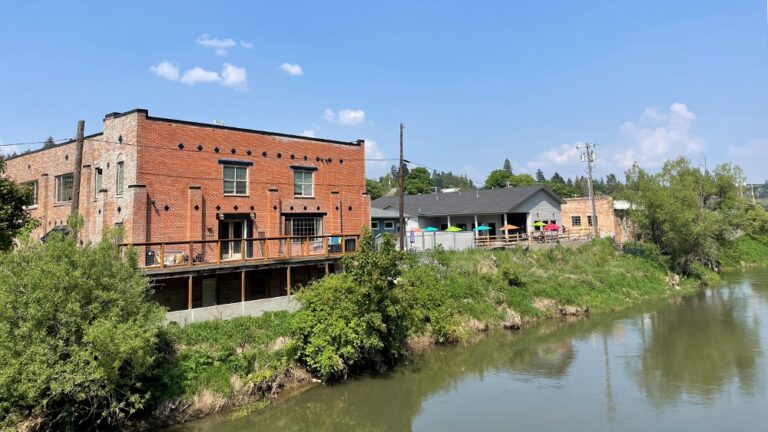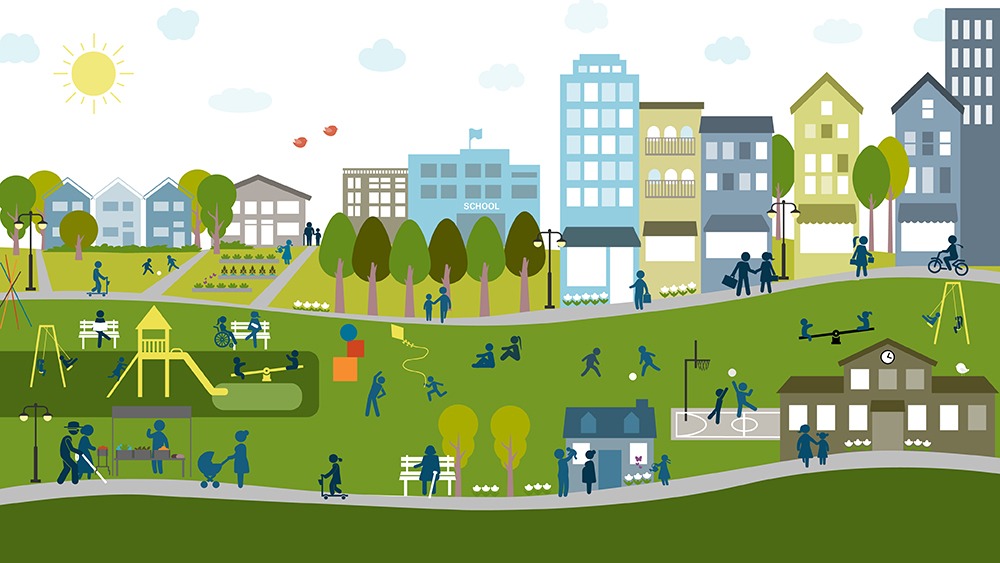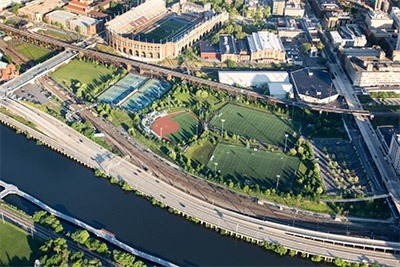Toward the end of 2023, the U.S. Environmental Protection Agency (EPA) released a yearlong Notice of Funding Opportunity (NOFO) for $2 billion to support environmental and climate justice via new Community Change grants. These grants ask applicants to propose projects that will advance environmental and climate justice while also reducing climate-related pollution.
In this article, we’ll explain environmental and climate justice, look at what Community Change grants require, and offer recommendations for those who may be managing projects or organizations that could benefit from this type of funding, whether in the public, private, or nonprofit sector.
What is environmental and climate justice?
Certain groups experience disproportionate and cumulative impacts from environmental hazards, which include pollution from sources such as industrial activity and legacy contamination. These impacts are based on socioeconomic factors, such as race, income, and limited English proficiency, that increase vulnerability and/or sensitivity. Per EPA’s definition, environmental justice (EJ) seeks to remedy these disparities through “the fair treatment and meaningful involvement of all people regardless of race, color, national origin, or income with respect to the development, implementation, and enforcement of environmental laws, regulations, and policies.”
Similarly, the concept of climate justice (CJ) recognizes that climate change disproportionately impacts certain socioeconomically disadvantaged groups. For example, people of color and people with lower incomes may be more likely to live in lower-quality housing or neighborhoods without tree canopies that exacerbate vulnerability to extreme heat and air pollution.
Programs and policies across many federal agencies increasingly recognize EJ and CJ as two sides of the same conceptual coin, and Community Change grants explicitly bring the two together. For more about EJ, ideas for mitigating EJ-related risk, and suggestions for developing an EJ framework to guide planning and decision making, see this Haley & Aldrich article from May 2023.
Community Change grant requirements in brief
What Community Change grants do
As noted above, Community Change grants will provide $2 billion to fund projects that will advance EJ and CJ while also reducing climate pollution.
When they’re due
Nov. 21, 2024. Applications will be assessed on a rolling basis, which will benefit those who apply early.
Who is eligible
Community Change grants hinge on partnerships. Eligible applicants:
- A partnership between two community-based nonprofit organizations (CBOs): groups that are certified by the IRS, a state, or a tribe and can demonstrate a connection to a community.
- A CBO can also partner with a local government or related public entity (like a school district or council of government), a tribe, or an institution of higher education.

The bottom line is that a CBO must be one of the applicant partners.
Each partnership must have a Lead Applicant; the other is referred to as a Statutory Partner. The Lead Applicant enters into a partnership agreement and will become the grantee that makes the subgrant to the Statutory Partner. Subgrants will be governed by EPA’s Subaward Policy. The Lead Applicant is responsible for the subgrantee’s performance in support of successful completion of the grant.
There’s another layer here: Grants should include multiple partners to help support implementation. EPA refers to these as “Collaborating Entities” and notes that applications without these entities may not score as well. Collaborating Entities can include those that are eligible to be Statutory Partners and those that are not, like states or international organizations. They may receive subgrants from the Lead Applicant to support grant implementation.
For-profit firms or individual consultants cannot be Lead Applicants, Statutory Partners, or Collaborating Entities. However, they can support implementation in other ways. Read on for more.
Potential projects and competitiveness
Community Change grants do not require a local match, and they fund applications under two tracks:
Track I applications support “Community-Driven Investments for Change,” or hands-on work that drives climate action and pollution-reduction activities that specifically benefit disadvantaged populations. EPA will make 150 Track I awards ranging from $10 million to $20 million and totaling $1.96 billion. Of this, $650 million (33%) has been set aside for “Targeted Investment Areas,” including tribes outside Alaska ($300 million).
Track II applications support “Meaningful Engagement for Equitable Governance,” or projects that advance EJ and CJ by engaging disadvantaged communities in governmental processes. EPA will make 20 Track II awards ranging from $1 million to $3 million.
Application requirements
Assuming single-spaced pages in 12-point font, Track I applications must be no more than 20 pages and Track II applications must top out at 15 pages. The contents of both types of applications (and how they will be evaluated) are listed in the Community Change grants NOFO, starting on pages 11 and 49, respectively. As an example, major components of a Track I application include:
- A workplan outlining what the project will do and how.
- Selected climate and pollution prevention strategies related to the proposed activity. The NOFO outlines these strategies, beginning on page 12.
- A 10-page maximum community engagement and collaborative governance plan.
- A five-page maximum community strength plan discussing economic benefits for the project’s target community and how the project mitigates the risk of displacement.
- A performance management plan with identified outputs and outcomes.
- A discussion of the Lead Applicant’s programmatic and managerial capacity and its ability to proceed within 120 days of award and complete all work in a three-year time frame.
- A discussion about sustaining the project’s benefits after the grant period ends.
- Project budget.
- A five-page maximum compliance plan describing how the Lead Applicant will comply with the grant’s terms and conditions and manage compliance risks.

Community Change grants have strong parallels to EPA’s Brownfields grant program, and past successful EPA Brownfields grants can provide useful models for some application requirements. For example, outlines of community engagement plans can be found under Part 2 (“Community Need and Community Engagement”) of any Brownfields grant. Applications for Community Change grants will require more detail, but seeing how other EPA grantees have addressed similar requirements at a higher level may be helpful. Similarly, Part 4 (“Programmatic Capability and Past Performance”) of any Brownfields grant addresses topics such as the Lead Applicant’s capacity and experience complying with grant terms, which must be addressed in greater detail in Community Change grant applications.
How to craft a strong Community Change grant proposal
The EPA provides free technical assistance, which can prove critical to creating a competitive application. Organizations that are interested in submitting a proposal should request technical assistance immediately.
Find your partners. For CBOs, this means thinking hard about which partners might fill critical gaps in your own capacity. For public entities and tribes, this means finding a CBO with sufficient capacity to compete for and administer federal grant funds and being clear what your institution can bring to the table to help support the effort. All partnerships should be substantial, specific, and meaningful, with clear contributions and benefits.
While ineligible to participate as official applicants, private partners can support applications by contributing to public engagement efforts and resource leveraging, which can also support their own goals or missions. For details, see the discussion of leverage in the NOFO.
Understand the grant requirements in detail. Read through all 97 pages of the NOFO and take notes. Identify questions based on your reading and ask the technical assistance providers linked above.
Develop a budget early — don’t wait. Federal grant budgets require applicants to sort costs into specific categories. Make sure you understand how the grant treats each category and that your budget accounts for the staff time necessary to administer the grant as well as indirect costs (e.g., utilities and rent). Grant budgets can be confusing, but the EPA provides helpful online training. Plus, once you’ve sketched out your budget, it will help drive your application narrative.
Apply early. Community Change grants are a one-time resource, and once the money is gone, they’re done. Plus, entities that apply early but are initially unsuccessful have an opportunity to debrief with EPA and reapply.
Questions? Contact the authors below. Haley & Aldrich assists with a variety of grant applications, and although Community Change grants are new, our expertise in preparing EPA Brownfields grants can mean success for this and other grant proposals.
Published: 2/6/2024
- Government infrastructure
- Industrial and manufacturing
- Airports
- Government facilities
- Ports, harbors, and coastal Infrastructure
- Transportation
- Real estate developers
- Brownfields
- Contaminated site management
- Water resources
Authors

Technical Expert

Project Sustainability Specialist




